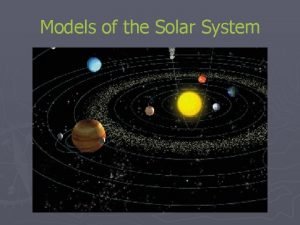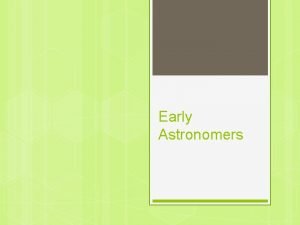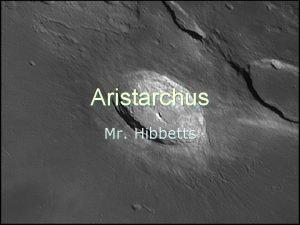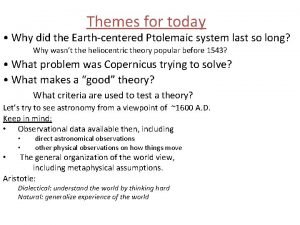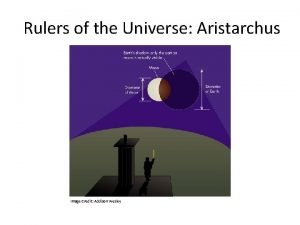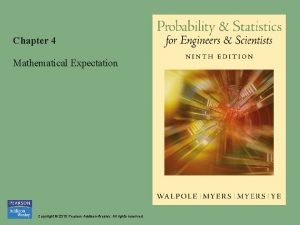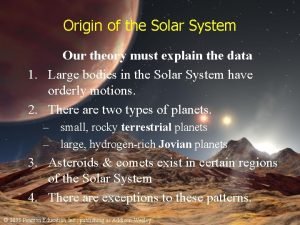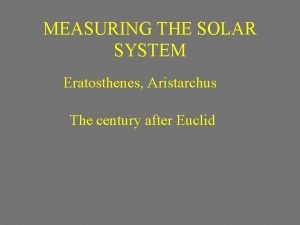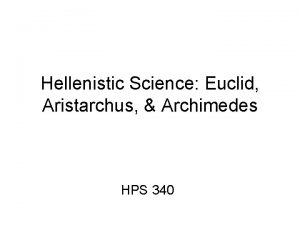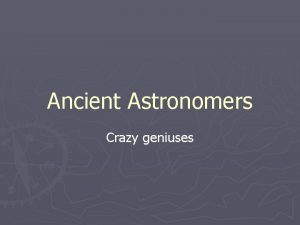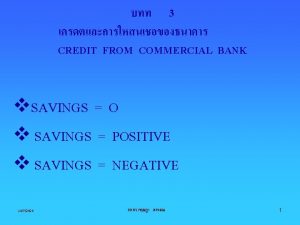Rulers of the Universe Aristarchus Image Credit Addison
























- Slides: 24

Rulers of the Universe: Aristarchus Image Credit: Addison Wesley

Part 1: Relative Size of the Earth and Moon



Penumbra Umbra Penumbra So not to scale!

Closer to scale: Moon is much farther away, however.

Earth’s Diameter

Radius. Moon = 0. 273 x Radius. Earth = 1. 73 x 103 km

Part 2: Distance to the Moon

relate angular size with physical size to determine distance R d A Angular size, A = 2 Distance, d, relates to physical radius, R d = R/Tan( )

(Next page) Camera Calibration: Hold the AMD so that the numbers are facing the camera lens and the zero is in the center of the Moon. Making sure that the string is taut, hold the free end of the string just beneath the lens. Take a picture. You will use this image to determine the calibration scale (number of pixels per degree). You only need to do this once if you use the same camera at the same zoom setting.


relate angular size with physical size to determine distance Take a picture of the Moon and measure the width of the Moon in pixels. Use your calibration of number of degrees per pixel to calculate the angle. R d RMoon = 0. 273 REarth A

relate angular size with physical size to determine distance Take a picture of the Moon and measure the width of the Moon in pixels. Use your calibration of number of degrees per pixel to calculate the angle. R d A Angular size of Moon, A = 0. 516 degrees RMoon = 0. 273 REarth d = 0. 273 REarth/Tan(0. 516 /2) d = 60 REarth = 3. 84 x 105 km

Part 3: Distance to the Sun Mars Mercury Sun Venus Earth


d. Moon d. Sun Cos(ɸ) = d. Moon/d. Sun = d. Moon/Cos(ɸ) ɸ

Use a gnomon to measure the cardinal directions, and the altitude and azimuth of the Sun. Use a simple astrolabe to measure the altitude of the Moon. Use the gnomon to measure the azimuth.

We’ll use spherical geometry and the altitude and azimuth measurements to determine the angle, ɸ, between the Sun and Moon.

d. Moon d. Sun Cos(ɸ) = d. Moon/d. Sun = d. Moon/Cos(ɸ) ɸ = 89. 852 degrees d. Sun = 389 d. Moon = 1. 496 x 108 km ɸ

Part 4: Relative Size of the Earth and Sun

relate angular size with physical size to determine distance Take a picture of the Sun and measure the width of the Sun in pixels. Use your calibration of number of degrees per pixel to calculate the angle. R d R = d. Tan( ) A

relate angular size with physical size to determine distance Take a picture of the Sun and measure the width of the Sun in pixels. Use your calibration of number of degrees per pixel to calculate the angle. R d A R = d. Tan( ) Angular size of Sun, A = 0. 533 degrees RSun = d. Sun. Tan(0. 533/2) = 1. 81 d. Moon = 109 REarth

Part 5: Discussion RMoon = 0. 273 REarth d. Moon = 60 REarth d. Sun = 389 d. Moon RSun = 109 REarth = 399 RMoon
 Aristarchus model
Aristarchus model Aristarchus model
Aristarchus model Aristarchus and eratosthenes
Aristarchus and eratosthenes Aristarchus of samos
Aristarchus of samos Aristarchus
Aristarchus Aristarchus
Aristarchus Akibat dari rotasi bumi
Akibat dari rotasi bumi This can be avoided by giving credit where credit is due.
This can be avoided by giving credit where credit is due. Iatrogen binyrebarkinsufficiens
Iatrogen binyrebarkinsufficiens Kenadie jourdin bromley
Kenadie jourdin bromley Julia addison
Julia addison Addison euhus
Addison euhus Addison woods georgetown
Addison woods georgetown Addison jaynes
Addison jaynes Addison wesley longman
Addison wesley longman Pearson addison wesley math
Pearson addison wesley math Addison wesley longman
Addison wesley longman Conn's vs addison's
Conn's vs addison's Addison wesley
Addison wesley Carotenemia
Carotenemia Addison xəstəliyinin digər adı
Addison xəstəliyinin digər adı Addison's disease vs cushing's syndrome
Addison's disease vs cushing's syndrome Pearson monopoly
Pearson monopoly Addison controlling
Addison controlling Pearson addison wesley
Pearson addison wesley
